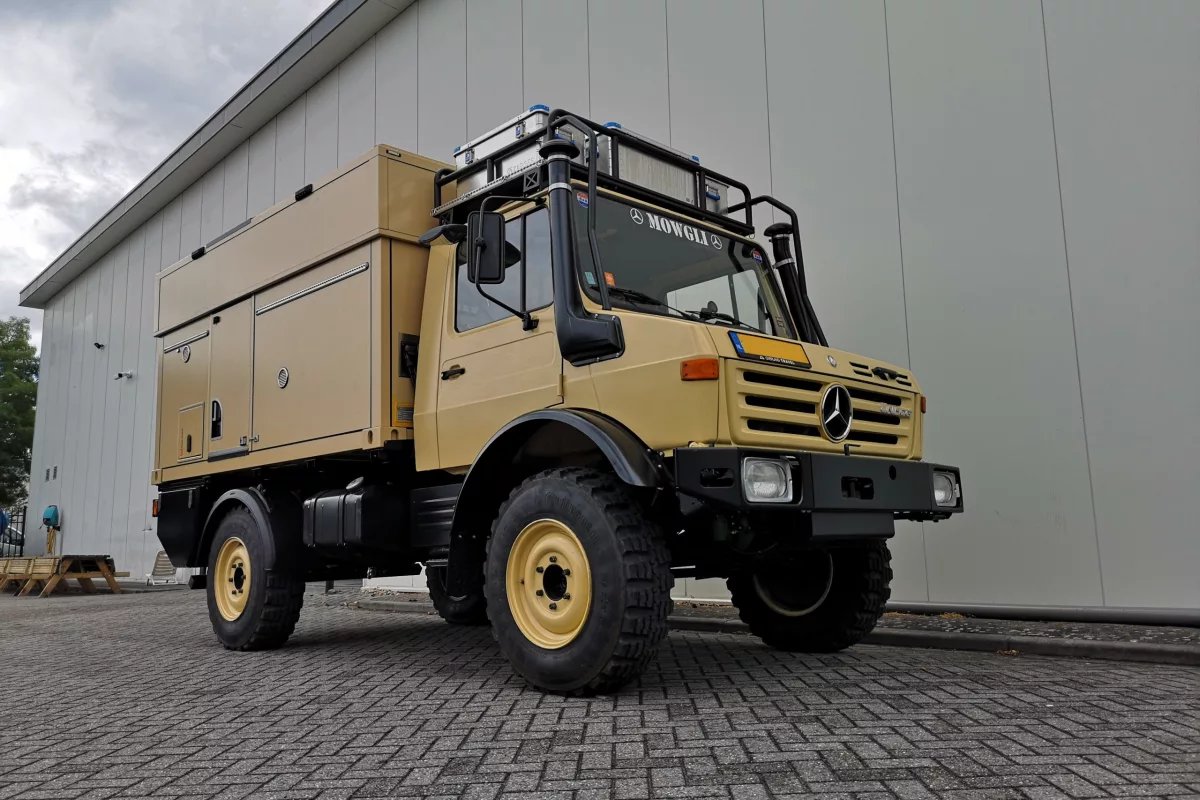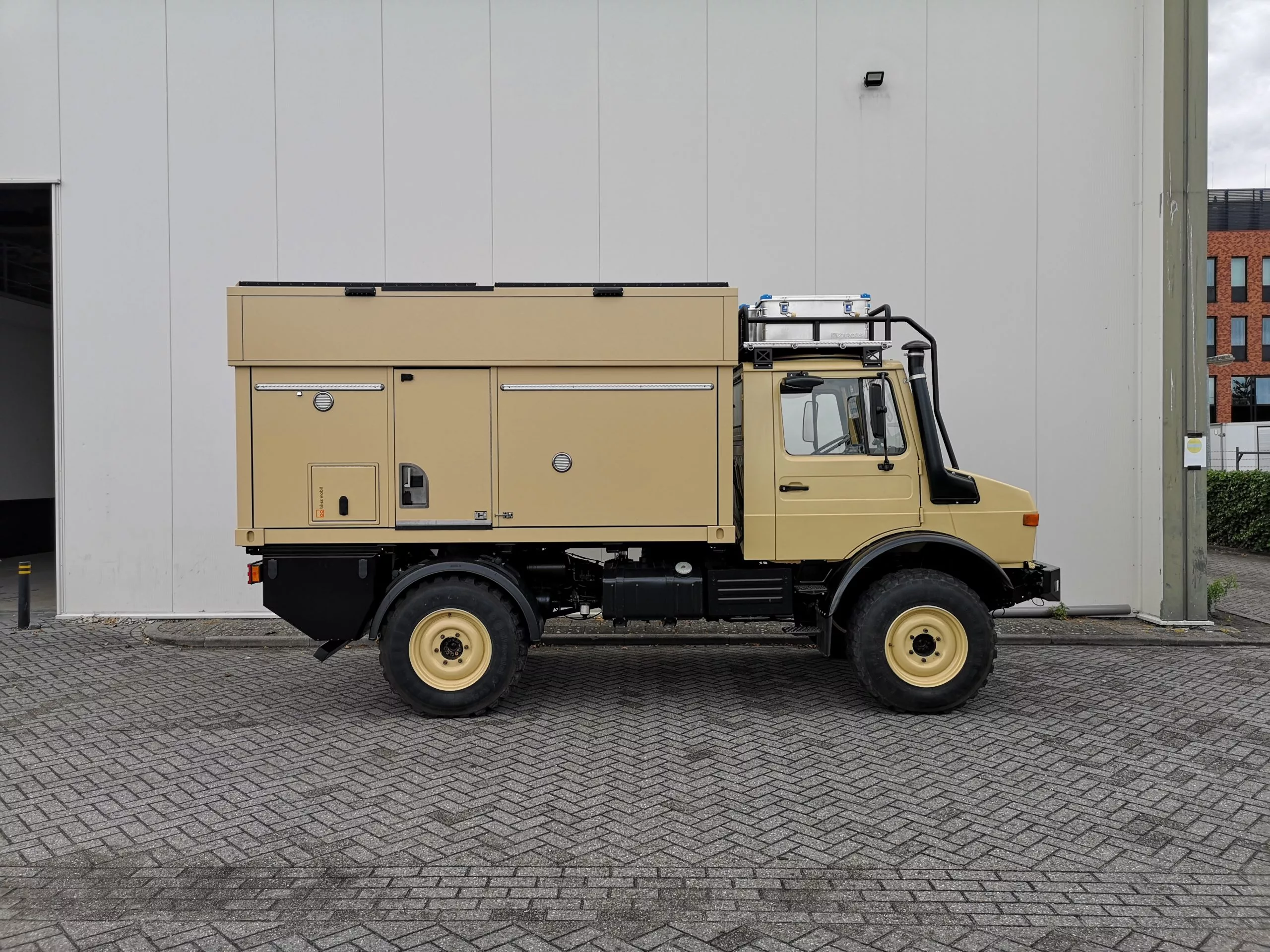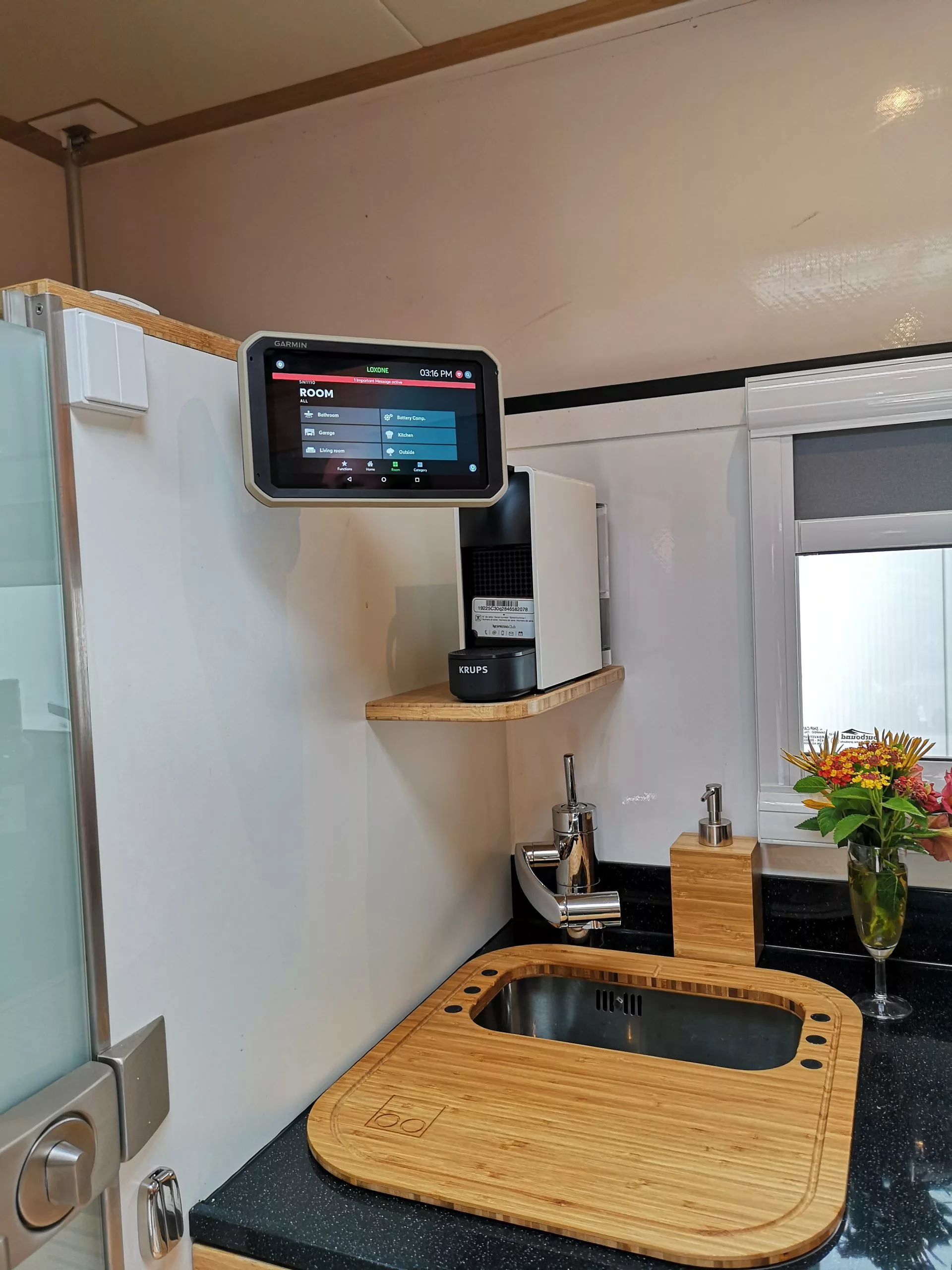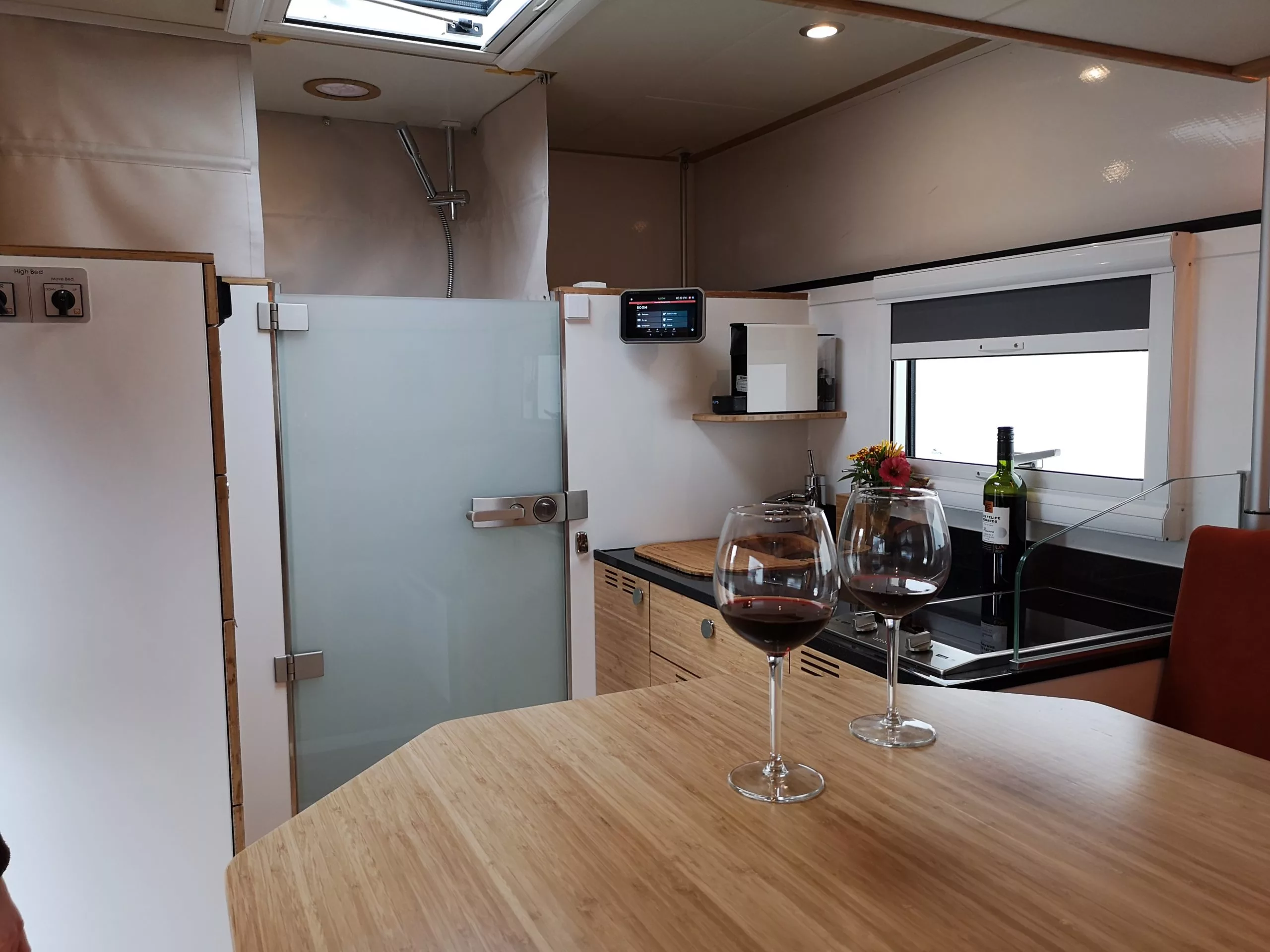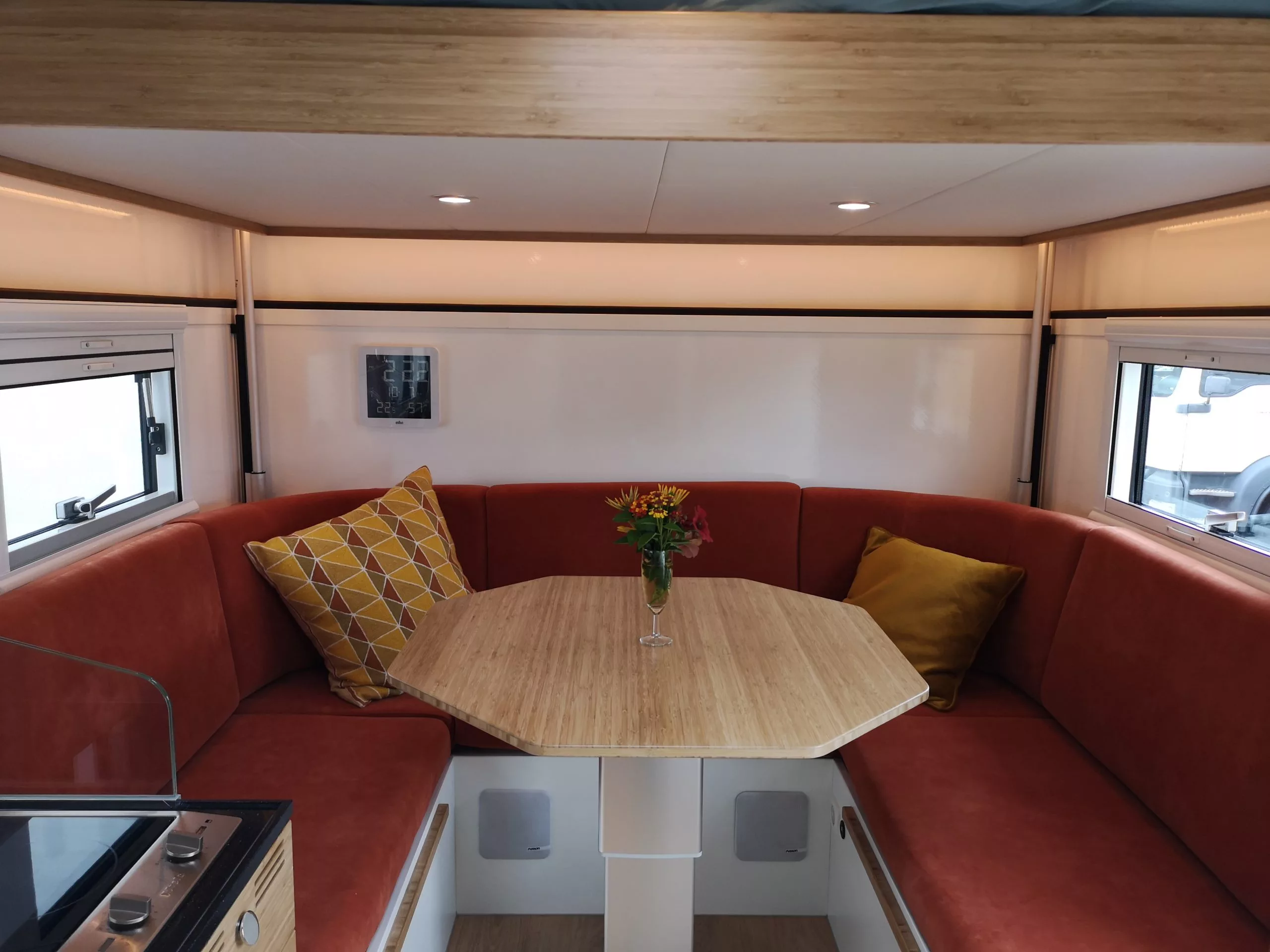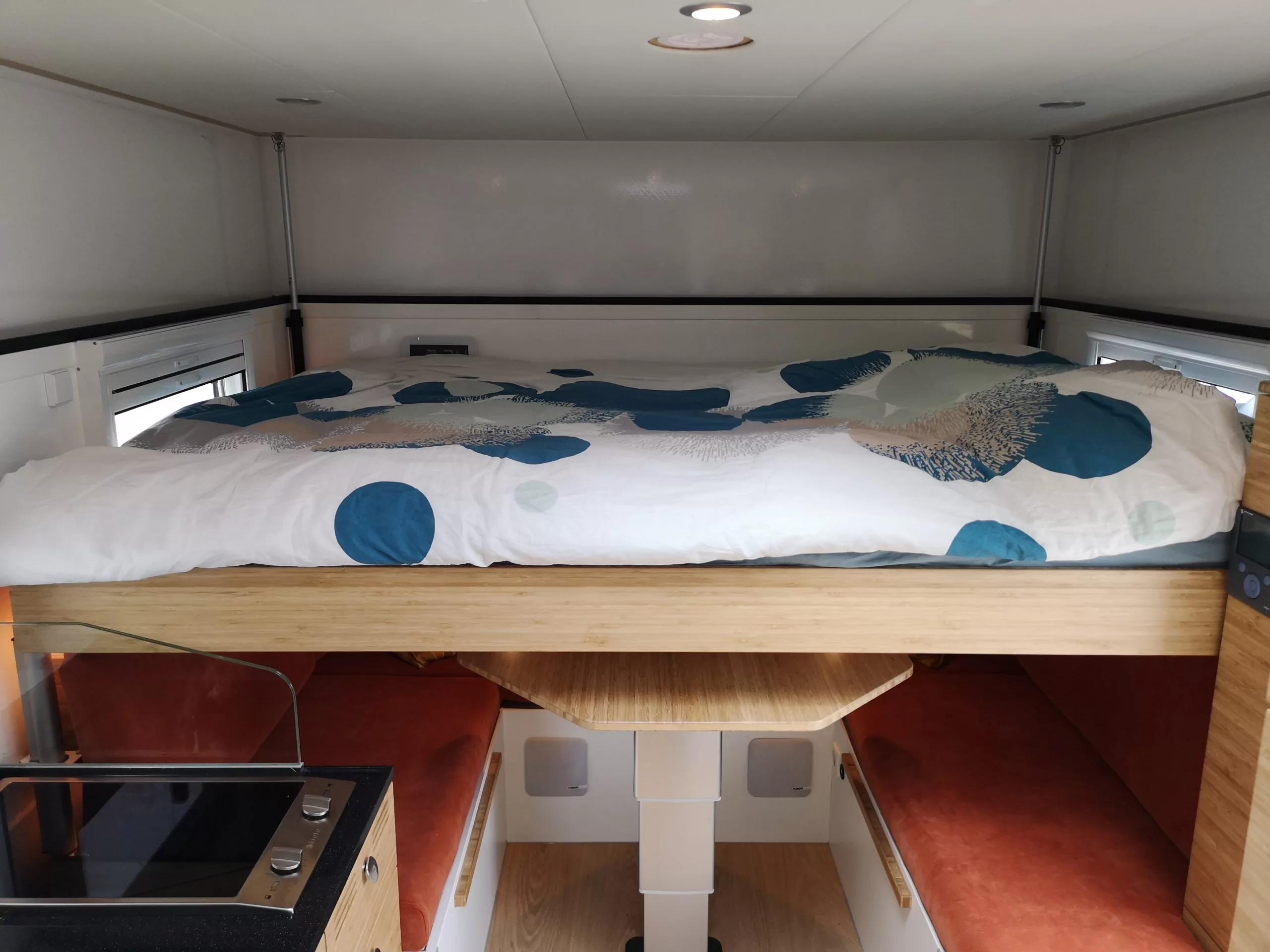Some off-road expedition vehicles replicate the comforts and elbow room of home by pairing huge, stretched living modules with huge trucks. Others attempt to optimize off-roadability by squeezing cramped living quarters into existing utility vehicle footprints. With its latest build, Dutch expedition module specialist Bliss Mobil has found a middle ground, planting an expandable version of its smallest motorhome box on the always-capable Mercedes-Benz Unimog and filling it with a comfortable four-sleeper layout tied together by an advanced digital interface. It's a cutting edge smart home meant to homestead in lands otherwise untouched by modern civilization.
Despite the complications presented by Covid-19, Bliss Mobil has been keeping its production gears grinding and has even completed work on two new models. The 11 Foot Lifting Top presented here is a redesign of an older pop-up 11-footer (3.4-m). Moving away from the steel frames that larger and older Bliss modules rely on, this new version is based around a lighter 6082 T6 aluminum frame that keeps overall module weight down to roughly 3,525 lb (1,600 kg).

The 11 Foot Lifting Top floor plan has a front U-shaped dinette below a lift-away 79 x 55-in (200 x 140-cm) bed. The dinette converts into a second bed measuring 79 x 57 in (200 x 145 cm), allowing the motorhome to accommodate up to four people in a converted bunk bed-style layout.
The floor plan continues with a kitchenette just behind the combo dining/sleeping area. The standard equipment package includes a dual-burner induction cooktop, 85-L fridge/freezer, separate 40-L standalone freezer and sink. A combination microwave oven is available optionally.

The rear-corner wet bath houses the shower and toilet. It's supplied by a water system with 410-liter fresh water tank, multi-filter system, boiler and electric pump.
Bliss Mobil modules come equipped with an impressive level of smart home-grade digital control. The 11 Foot Lifting Top's system has a global Wi-Fi router with 4G as its foundation and a connected smartphone and Garmin Overlander as its interface. Garmin launched the Overlander 7-in touchscreen nav system last year specifically for off-road travelers and adventurers, loading it with topographic maps and useful information like public campgrounds and overlanding points of interest. It can be used in the Bliss Mobil living area as a smart home controller and brought into the cab for use as a nav system.
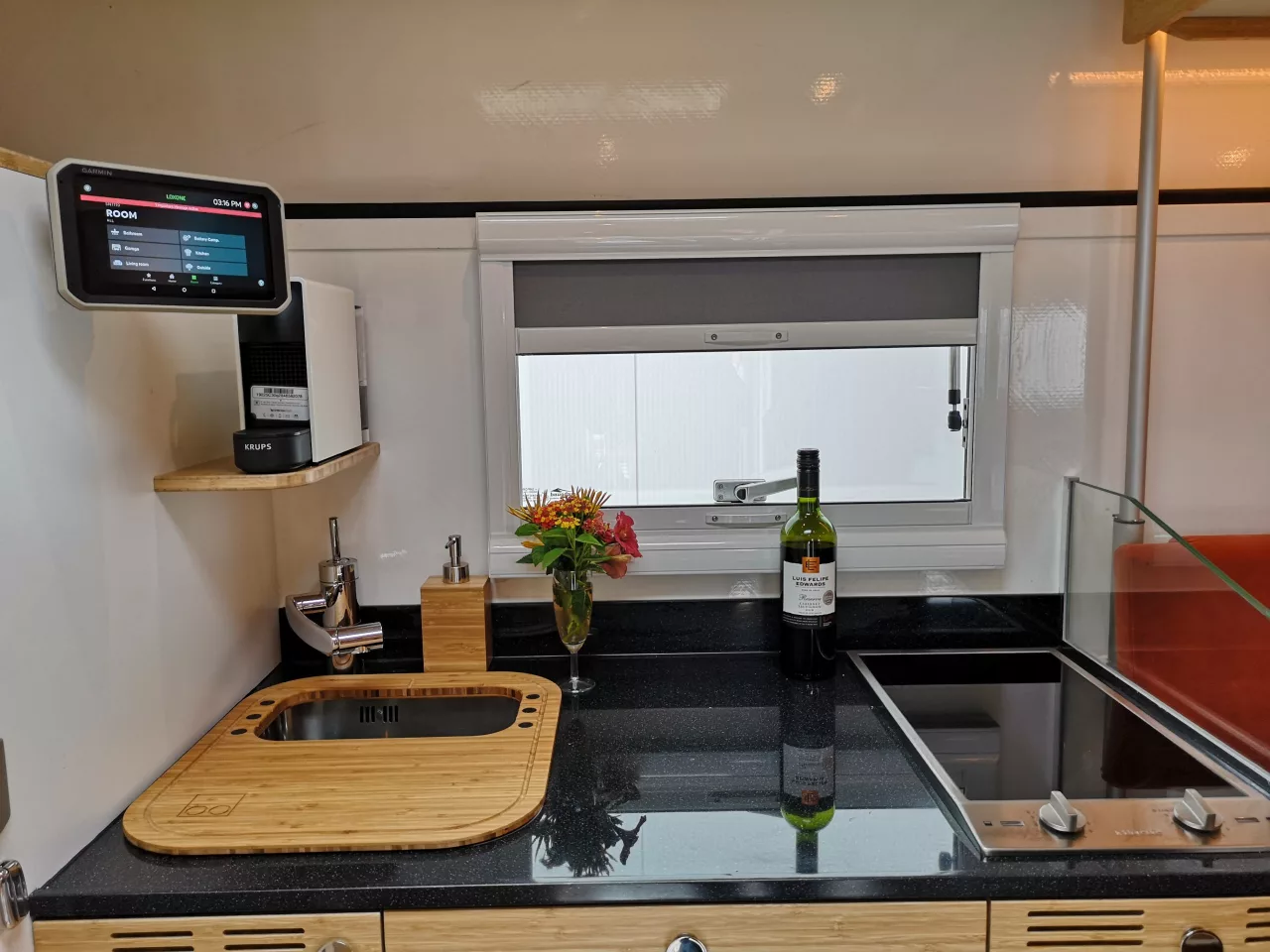
In addition to giving owners direct touchscreen and smartphone monitoring and control of features like climate, lighting and water, Bliss' system includes sensors and actuators that allow it to autonomously monitor and protect the vehicle. For instance, should the system detect a water leak, it will automatically shut off the water supply to prevent damage.
Bliss Mobil backs the smart controls up with redundant physical controls and shutoffs organized in a centralized panel, protecting travelers from critical failure in the field. That same redundancy applies to other systems as well — rather than a single heater, Bliss gives owners three standard systems: electric floor heating, diesel air heating and a reverse-cycle heating function on the air conditioner. The 400-Ah lithium-ion battery bank can be charged via roof-mounted solar panels and the vehicle alternator.
Bliss Mobil specializes in motorhome modules, not complete trucks, so the new lifting 11-footer can be mounted on a variety of truck bases. The lightweight aluminum bones help prepare it for trucks with gross vehicle weight ratings (GVWR) below 7.5 tons, according to Bliss, including the Ford F-550, Iveco Daily 4x4 and Mitsubishi Fuso Canter 4x4.

Of course, those other trucks don't quite command the same level of immediate respect as the Mercedes Unimog and its chiseled jawline, the perfect 4x4 to serve as the carrier vessel for the very first 11 Foot Lifting Top. Before delivering its latest module to its new owner last month, Bliss mounted it to a 435-series U 1300.
Using the aluminum-framed, lifting version of its smallest motorhome box allows Bliss to escape the full-height fixed roofs and stretched bodies that bloat other Unimog motorhomes, like the Bimobil EX 435 and Moghome, keeping the resulting Unimog expedition vehicle relatively compact, light and balanced. The vehicle stands 10 feet (3 m) tall and enjoys a lower center of gravity with the power roof down in drive position. At camp, the raised roof adds an extra 1.6 ft, pushing peak ceiling height up to 6.6 feet (2 m) to let average-height campers live and move comfortably inside. The 11-foot (3.4-m) camper module length reels total vehicle length in to 224 in (568 cm), shorter than a full-size camper van like the 236-in (599-cm) White Rocket.
Bliss Mobil tells us the 11 Foot Lifting Top starts at €180,000 (before shipping and import tax, approx. US$212,550) with the full standard feature set listed on its website. That price includes Bliss' torsion-free mounting subframe tweaked for the buyer's specific truck model, but not the truck itself. With a closed height of 67 in (170 cm), the 11-foot motorhome unit fits neatly in a standard shipping container, an advantage during initial purchase and when moving the unit around for intercontinental overland travel. Bliss ships modules all over the world to be mounted on truck chassis locally, rather than requiring the trucks to be sent to its factory for mounting.
Source: Bliss Mobil
